[Delicious frozen squid recipe! ] Tips on how to eat squid deliciously and without waste
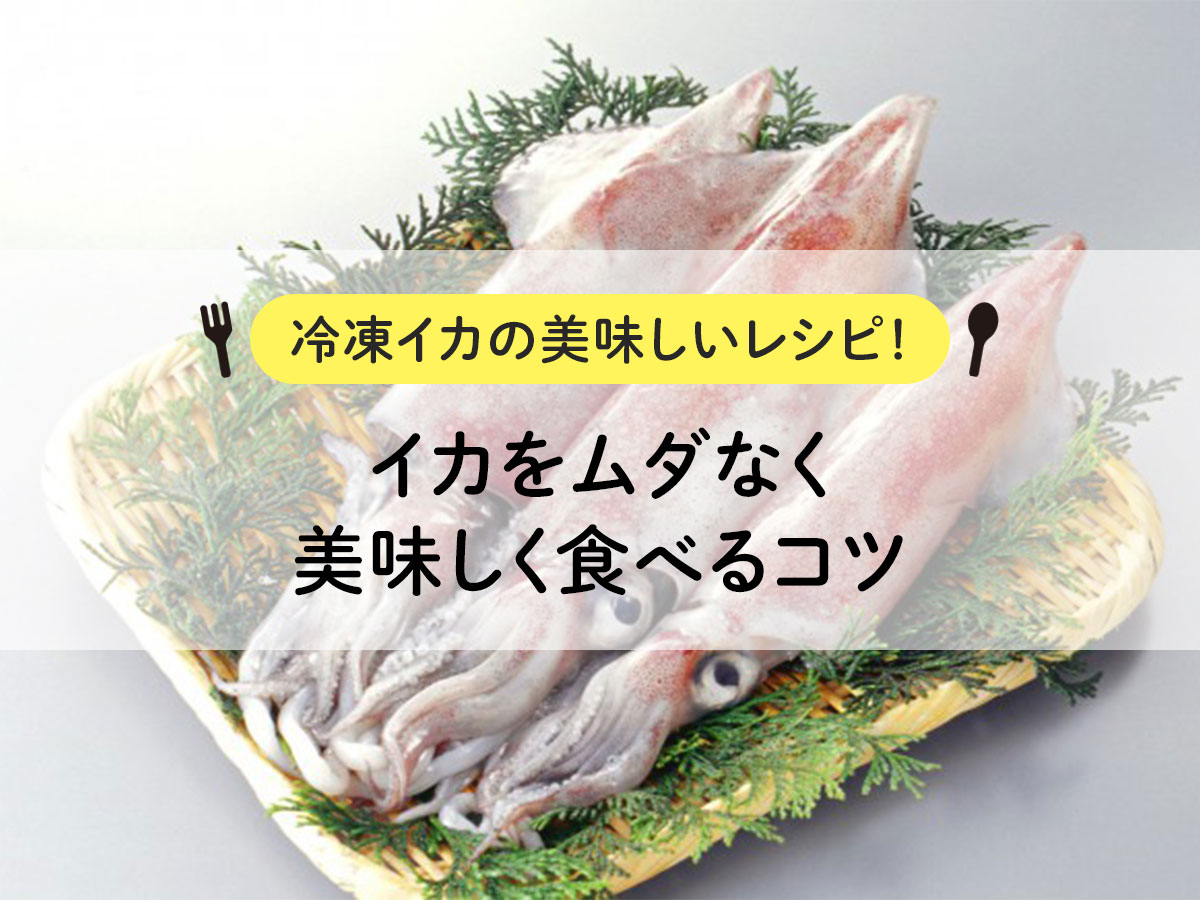
Frozen squid is affordable and delicious, so many people often buy it.
In fact, squid is a seafood that is suitable for freezing as it does not lose its quality easily even when frozen. We sell whole squid, cut squid, and a variety of frozen squid. There are many ways to eat it, such as sashimi, boiled, stir-fried, and deep-fried, and you can also eat its internal organs.
In order to make frozen squid more delicious, we will introduce how to freeze and thaw squid, recipes using squid, and recipes that are easy to make.
目次
Delicious even when frozen! How to freeze and thaw squid
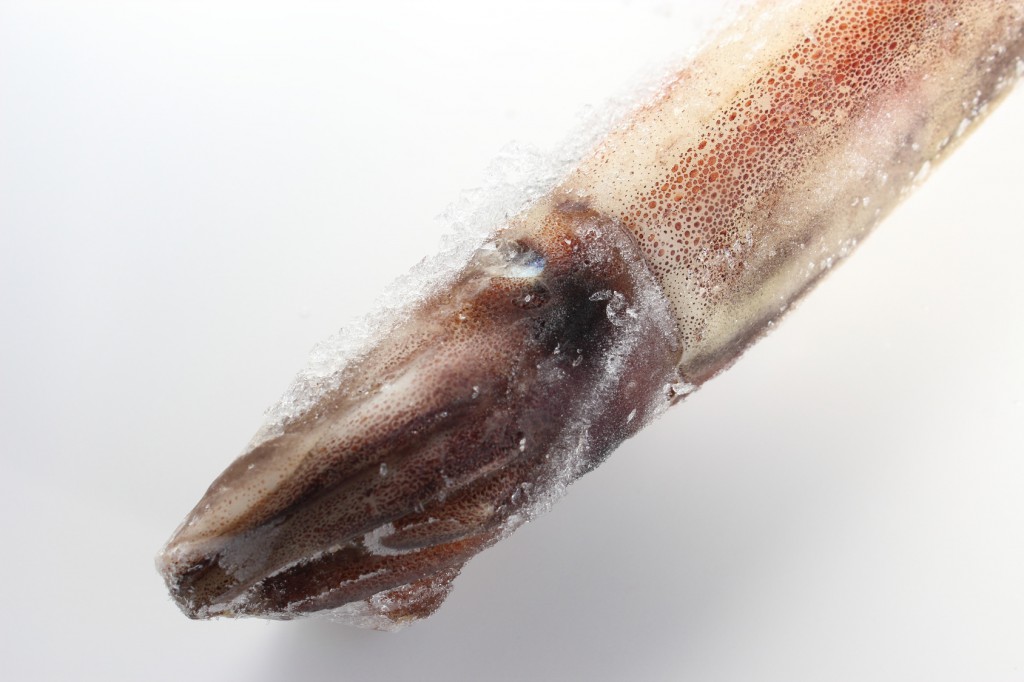
Characteristics of frozen squid
Squid is fibrous and has low water content, so it is less susceptible to damage from freezing. It is the most suitable seafood for freezing as it does not lose quality when frozen.
In particular, commercially available frozen squid is fresh and of good quality because the squid is rapid freezing immediately after being caught. rapid freezing allows you to freeze the squid without destroying its cell structure, so you can maintain the quality of the squid before freezing.
By rapid freezing the squid, you can maintain its freshness and enjoy the same flavor and texture as raw squid.
How to freeze squid at home
When freezing squid, remove the perishable membranes, cartilage, beak, skin, and ink bag and wash them thoroughly. Wipe dry with kitchen paper, wrap tightly in plastic wrap, and freeze in a storage bag. Commercially available frozen squid is rapid freezing, so it won't lose its freshness even if it's frozen with the pulp still intact.
However, if you want to freeze it at home, it is not possible to rapid freezing, so it is better to remove the pulp before freezing.
It is easier to use if you cut the meat and freeze it, such as separating the body and geso into round slices. If the squid is not fresh enough, you can prevent the quality from deteriorating by washing it with sake and salt and then freezing it.
How to thaw frozen squid
The quality of squid does not deteriorate even if it is frozen, but if you defrost it incorrectly, it will not be delicious. The recommended way to thaw frozen squid is to thaw it in the refrigerator or under running water. Don't thaw it completely, leave it only partially thawed. Half-thawed meat is easier to cut with a knife, and the quality will not deteriorate. Also, be careful not to thaw for too long, as the quality may deteriorate if thawed for a long time. Squid can be refrozen, but the quality will deteriorate, so it's best to eat it once it's thawed.
Eat all the squid without wasting anything! Delicious recipes using cotton
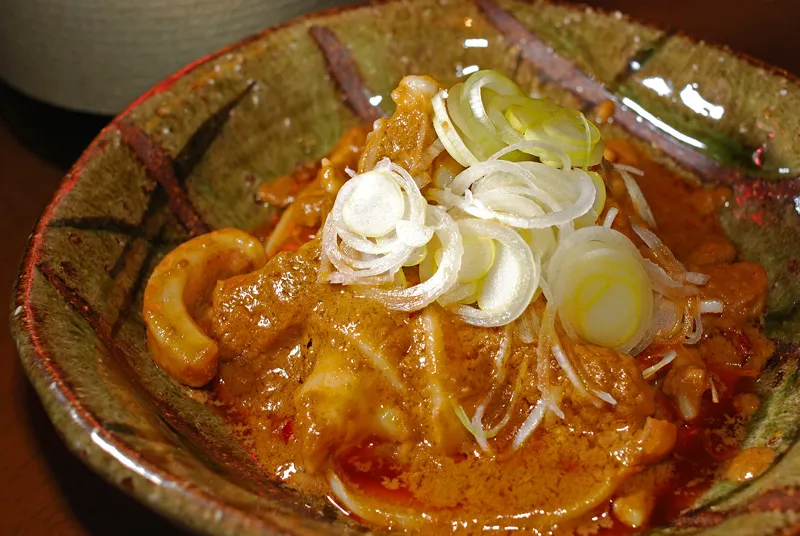
Source: http://nsakanaya.exblog.jp/4598720/
In addition to the body and snails, squid can also eat its internal organs, which are its membranes. Cotton is sticky and delicious, so it would be a waste to throw it away. Fresh squid guts can be eaten as salted fish without having to be heated. However, squid may also contain a parasite called Anisakis, which can cause food poisoning, so be careful. You can also eat the guts of frozen squid if you cook it.
Squid can be easily shredded, so we recommend using the guts. We will introduce how to clean Japanese squid, which is often prepared at home, and a delicious recipe using the pith.
How to cut Japanese squid
Insert your thumb as far as possible into the back of the squid's body, and pull the legs with your other hand. Then, you can easily pull out all the way to the end of the cotton.
For the feet, remove the ink bag attached to the cotton and separate the cotton from the head at the cartilage at the base of the foot. Make a cut in the eye area, remove the beak, and remove the eyes. Remove the geso by scraping off the large sucker.
Place the body with the ears facing down and remove the ears by pulling. Peel the surface of the body and ears. Wash the torso thoroughly and remove any remaining cartilage. Then, cut the squid and use it according to your cooking method and purpose.
Salted squid
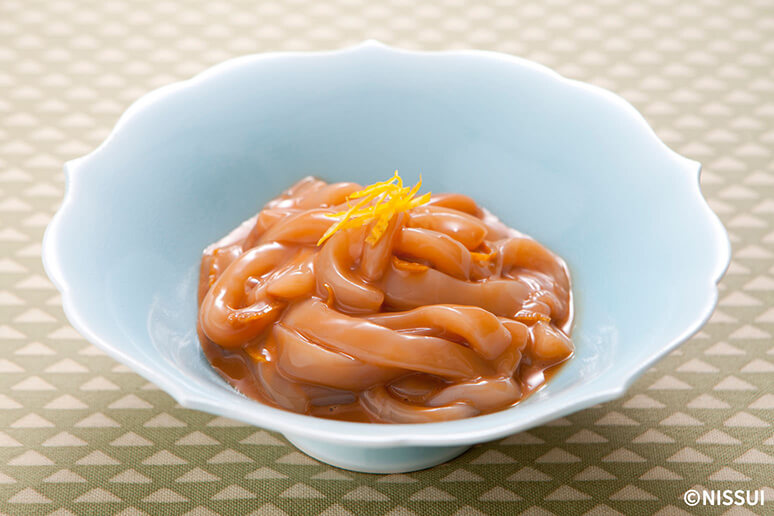
Source: http://www.nissui.co.jp/recipe/item/00860.html
☑(材料)イカ、塩
Cut the squid, separate the head and the liver, and remove the ink bag attached to the liver. Peel off the skin from the body and cut into 3 equal parts lengthwise. Sprinkle salt on the liver, meat cut into thirds, and geso and leave in the refrigerator overnight.
After one night, remove the flesh and cut into thin strips using a knife at an angle. Add the cut squid meat, geso, and leek to the bowl. Add salt to taste and let it mature for 3 days to 1 week. Please adjust the amount of salt and ripeness to your liking.
Grilled squid
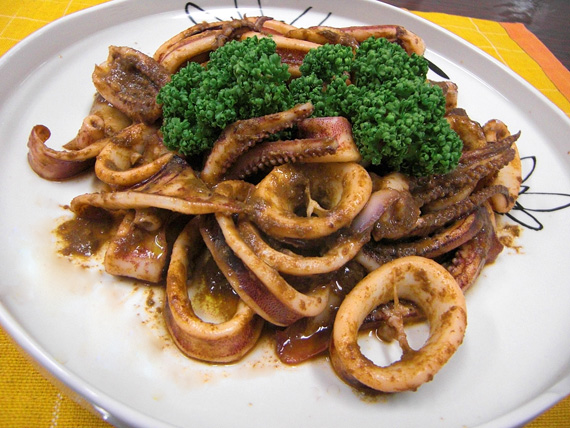
Source: http://www.ko-suisan.co.jp/recipe/ikagoroyaki.html
☑(材料)イカ、長ネギ、醤油、酒
Clean the squid, remove the ink bag, and separate it into the inside and inside. Cut the body into rounds, and cut the geso into two legs each. Squeeze the pulp into a bowl, add soy sauce and sake and mix to make the sauce.
Cut the green onion diagonally into about 5mm pieces. Heat oil in a frying pan and fry the squid and green onions. When the fire goes through, add the sauce and heat over high heat for about 10 seconds, then return to low heat and stir-fry quickly.
Grilled squid with butter and miso
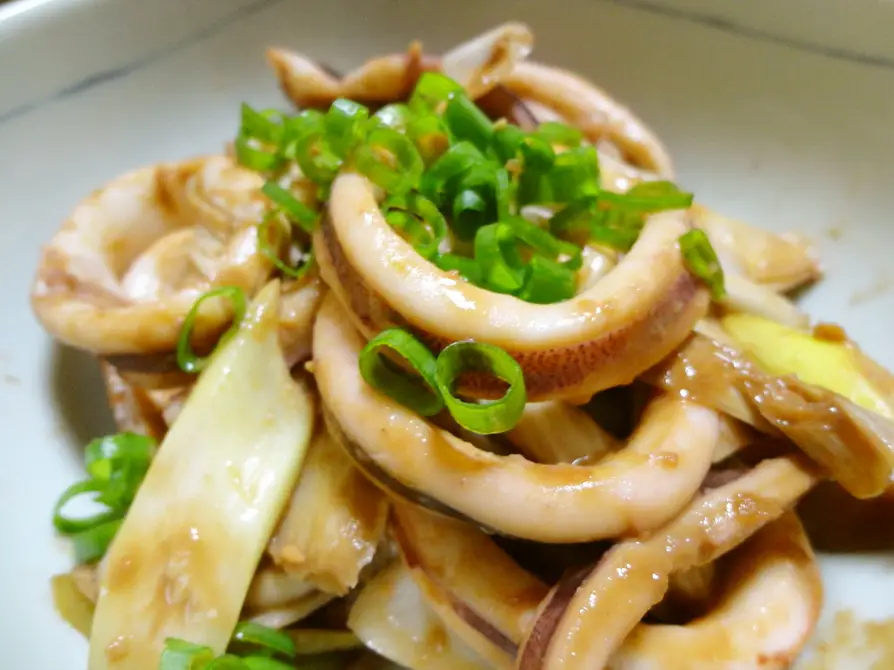
Source: http://cookpad.com/recipe/1521711
☑(材料)イカ、長ネギ、みそ、みりん、バター
Cut the green onion into thin half-moons. Slice the squid into 1cm rounds, make a slit in the thin skin of the squid and squeeze out the squid.
Place the squid in a heat-resistant dish, top with the squid, seasonings, squid miso mixed with chopped green onions, and butter, and toast in the toaster. Bake for about 15 minutes, then sprinkle with the remaining green onions.
squid and tomato pasta
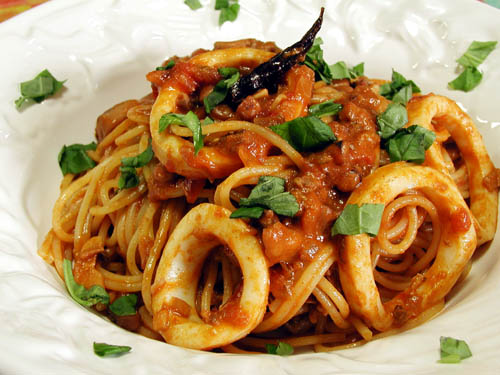
Source: https://plaza.rakuten.co.jp/ptinagaki/3010/
☑(材料)イカ(ワタとゲソ)、玉ネギ、トマト缶、鷹の爪、パスタ、塩・コショウ、オリーブオイル
Trim the squid and separate it into the inside and the inside. Squeeze the pulp into a frying pan, turn on the heat, and stir-fry. Add olive oil, hawk claws, sliced garlic, and thinly sliced onions and stir-fry.
Add the canned tomatoes to the frying pan, bring to a simmer, and season with salt and pepper. Boil the pasta in a large pot until firm, then add the cooked pasta and geso to the frying pan. Once the sauce is coated with the pasta and the geso is cooked through, it's done.
Quick and easy to make! Delicious recipes using frozen squid
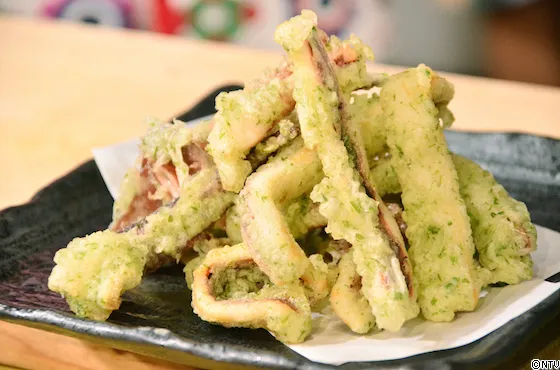
Source: http://www.ntv.co.jp/aozora/recipes/2015/09/post-1345.html
For those who want to cook squid without much effort, pre-processed frozen squid is recommended. Since it is processed into fillets, it can be used immediately when needed. Introducing recipes that can be easily made using frozen squid.
Squid and chive pancake
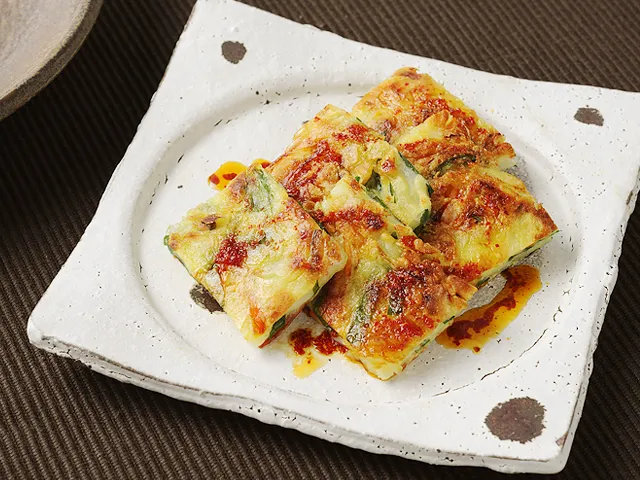
Source: https://www.sbfoods.co.jp/recipe/detail/04066.html
☑(材料)イカ、ニラ、長ネギ、ニンジン、玉ネギ、小麦粉、片栗粉、溶き卵、鶏がらの素
(タレ)醤油、酢、砂糖、ゴマ油、塩・コショウ、炒りゴマ、薬味ネギ
Cut the chives into 5cm pieces, the green onions into thin slices diagonally, the carrots into 5cm pieces, the onions into thin pieces, and the squid into bite-sized pieces. Mix flour, potato starch, beaten eggs, salt, chicken stock, water, cut vegetables and squid in a bowl, and let rest for about 30 minutes.
Heat oil in a frying pan, pour the mixed ingredients and fry. Once it's browned, flip it over and fry it until both sides are browned. Cut into bite-sized pieces and sprinkle with sauce.
squid tempura
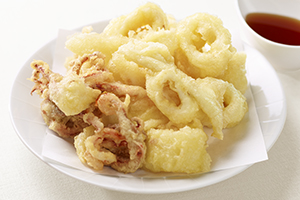
Source: https://www.nisshin-oillio.com/recipe/detail.html?id=7774
☑(材料)イカ、小麦粉、溶き卵
Make grid-like cuts in the squid and cut into bite-sized pieces. Wipe the moisture with kitchen paper and sift the flour. Add flour, beaten eggs, and water to a bowl and mix thoroughly. Coat the squid generously with batter and fry in oil heated to 180 degrees. Once it's golden brown, take it out, drain the oil, and it's done.
Stir-fried squid and vegetables
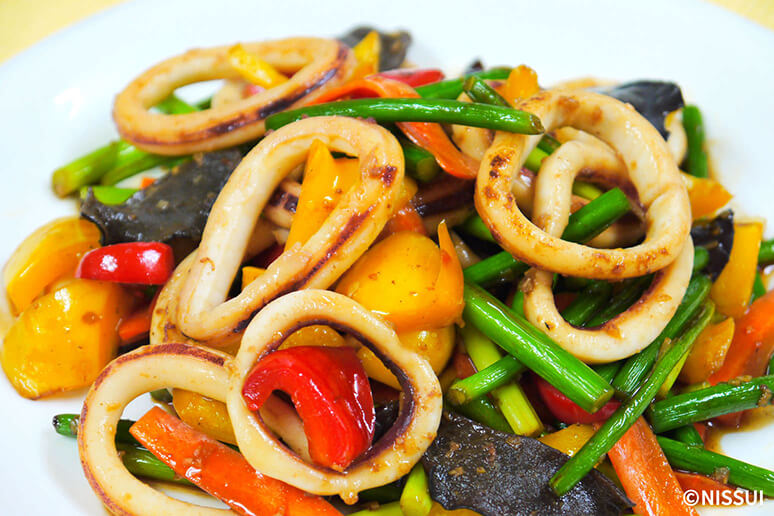
Source: http://www.nissui.co.jp/recipe/item/00487.html
☑(材料)イカ、まいたけ、キャベツ、パプリカなどの野菜、ニンニク、長ネギ、鶏がらの素、ゴマ油
Cut the vegetables and squid into bite-sized pieces, and finely chop the garlic and green onions. Heat sesame oil in a frying pan, fry chopped garlic and green onions, and add squid. When the squid becomes soft, add the vegetables, chicken stock, and salt, cover, and steam-fry. Heat for about 5 minutes, and once the vegetables are cooked through, it's done.
Sauteed squid with butter
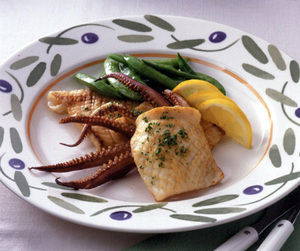
Source: https://www.orangepage.net/recipes/detail_118625
☑(材料)イカ、ニンニク、オリーブオイル、バター、醤油
Make grid-like cuts in the squid and cut into bite-sized pieces. Add olive oil and chopped garlic to a frying pan and stir-fry. Add the squid, and once it's cooked through, add the butter and mix it together, and finally add the soy sauce and mix it quickly and it's done.
Boiled squid and radish
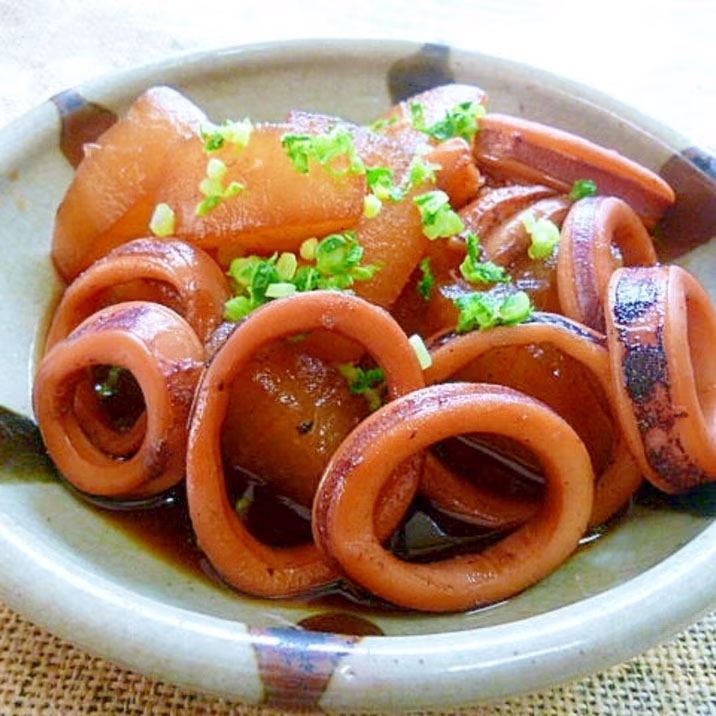
Source: http://recipe.rakuten.co.jp/recipe/1980005527/
☑(材料)イカ、大根、醤油、砂糖、酒、だし汁
Cut the squid into rounds of about 5mm and the geso into two pieces each. Peel the daikon radish, cut into 2cm rounds, and cut into quarters. Boil the cut daikon radish until soft. Add the seasonings to the pot, bring to a boil, and add the squid. Once cooked, remove the squid, add the daikon radish, cover and simmer. After simmering for about 20 minutes, add the squid again, cover with a lid, and simmer for about 5 minutes to complete.
Conclusion
The quality of squid does not deteriorate even when frozen, so frozen squid is of good quality and delicious. It can be enjoyed in a variety of ways, and you can enjoy not only the torso and the guts, but also the guts.
In addition, pre-processed frozen squid is also available, so it is recommended for those who want to cook squid without spending much time or effort. Try making various dishes using frozen squid.
⇒⇒Try frozen squid now!








![[Storage period increased by 30 times! ] Achieving a stable supply of raw whitebait!](https://shunkashutou.com/wp-content/uploads/2016/11/579c55e6d32e1385c250e8e7c3ed59a71.jpg)
![[Sales increased 100 times! ] rapid freezing the signature menu “Ni-katsu sandwich”!](https://shunkashutou.com/wp-content/uploads/2016/11/IMG_02391.jpg)
![[Horse sashimi] We have significantly reduced waste loss with rapid freezer!](https://shunkashutou.com/wp-content/uploads/2016/11/5fda59d0cbcdabde18e58c3c58c09ed0.jpg)




![[Storage period increased from 3 days to half a year! ] Restaurants are expanding their business using wholesale and mail order!](https://shunkashutou.com/wp-content/uploads/2018/04/66c19942ab4ba346fdb64ccc04cde373.png)
![[Reduce loss from 200 kg of oysters to zero] Improve loss and expand business with rapid freezer](https://shunkashutou.com/wp-content/uploads/2018/06/19785ca583a8d3c4041c7c192d041b0d.jpg)














![[Tips for making egg rolls that can be frozen] Introducing freezing methods, storage periods, and recipes!](https://shunkashutou.com/wp-content/uploads/2023/10/tamagoyaki-768x512-1.jpg)
![[Can it be frozen? ] Introducing how to freeze kamaboko and how to remake it](https://shunkashutou.com/wp-content/uploads/2023/09/6d2830823df2896a1601685353b0fdf5.jpg)
![[Nutrition remains the same! ? ] Introducing how to use frozen vegetables and recommended recipes](https://shunkashutou.com/wp-content/uploads/2023/10/vegetables-reito-1-1-768x511-1.jpg)
![[Can it be frozen? ] How to freeze fresh cream, storage period, thawing method and 5 recipes!](https://shunkashutou.com/wp-content/uploads/2023/09/1887f5bd8f2d7f9ef1d88754f2c5bcc4.jpg)
![[Boiled eggs can be frozen! ] How to freeze boiled eggs, storage period, and recipe introduction](https://shunkashutou.com/wp-content/uploads/2023/07/e9e8eb9cedf1c8fe2dea6d08c136952e.jpg)
![[It's good to know! ] Introducing how to freeze curry, how long to keep it frozen, and how to thaw it |](https://shunkashutou.com/wp-content/uploads/2023/08/5de5495c896622dc896a8f23d9528300.jpg)
![[Explanation with photos] How to freeze octopus, storage period, and 5 recipes!](https://shunkashutou.com/wp-content/uploads/2023/10/5128a2b3fa3cc254cffab87821372215.jpg)

![[Explanation with photos! ] How to freeze pork, expiration date, and 5 recipes!](https://shunkashutou.com/wp-content/uploads/2023/10/8688cd28f298c3180c30169cec815293.jpg)
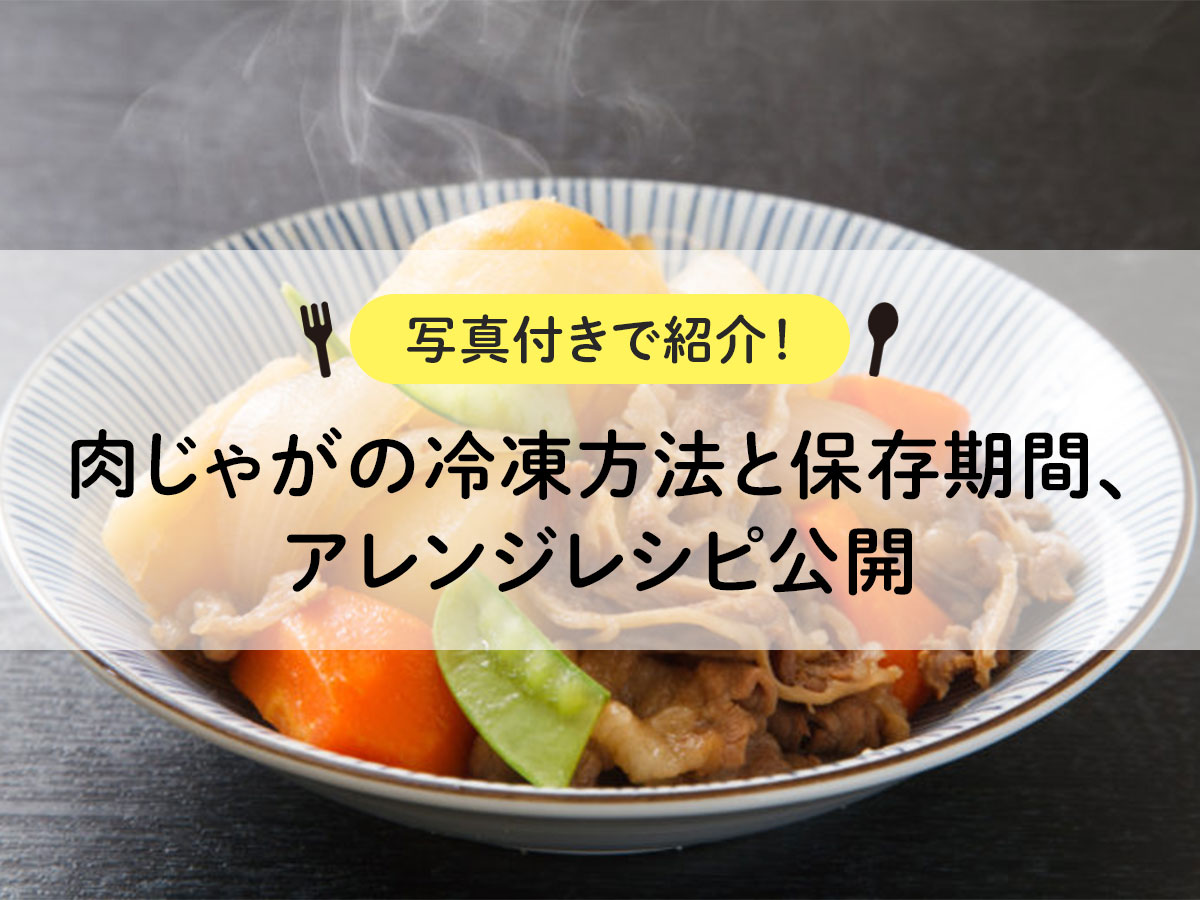
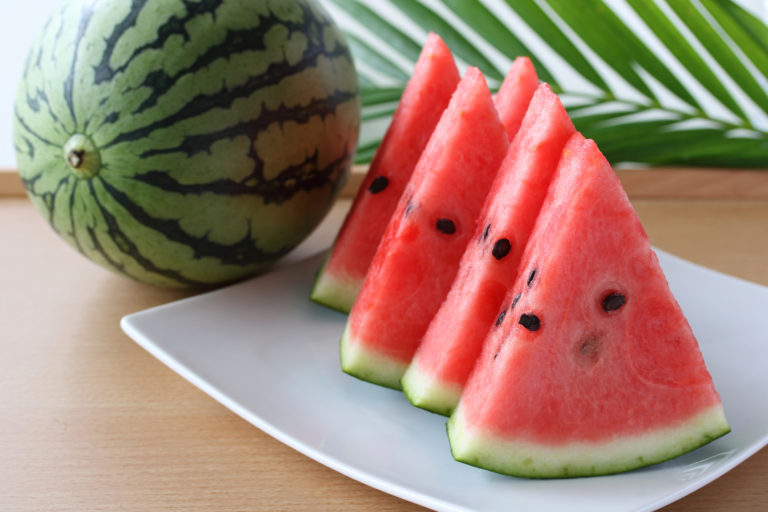

![[Can it be frozen? ] How to freeze and thaw okonomiyaki, arrangement recipe!](https://shunkashutou.com/wp-content/uploads/2024/01/58bc763c02f23a2a6442d6449853a67b.jpg)
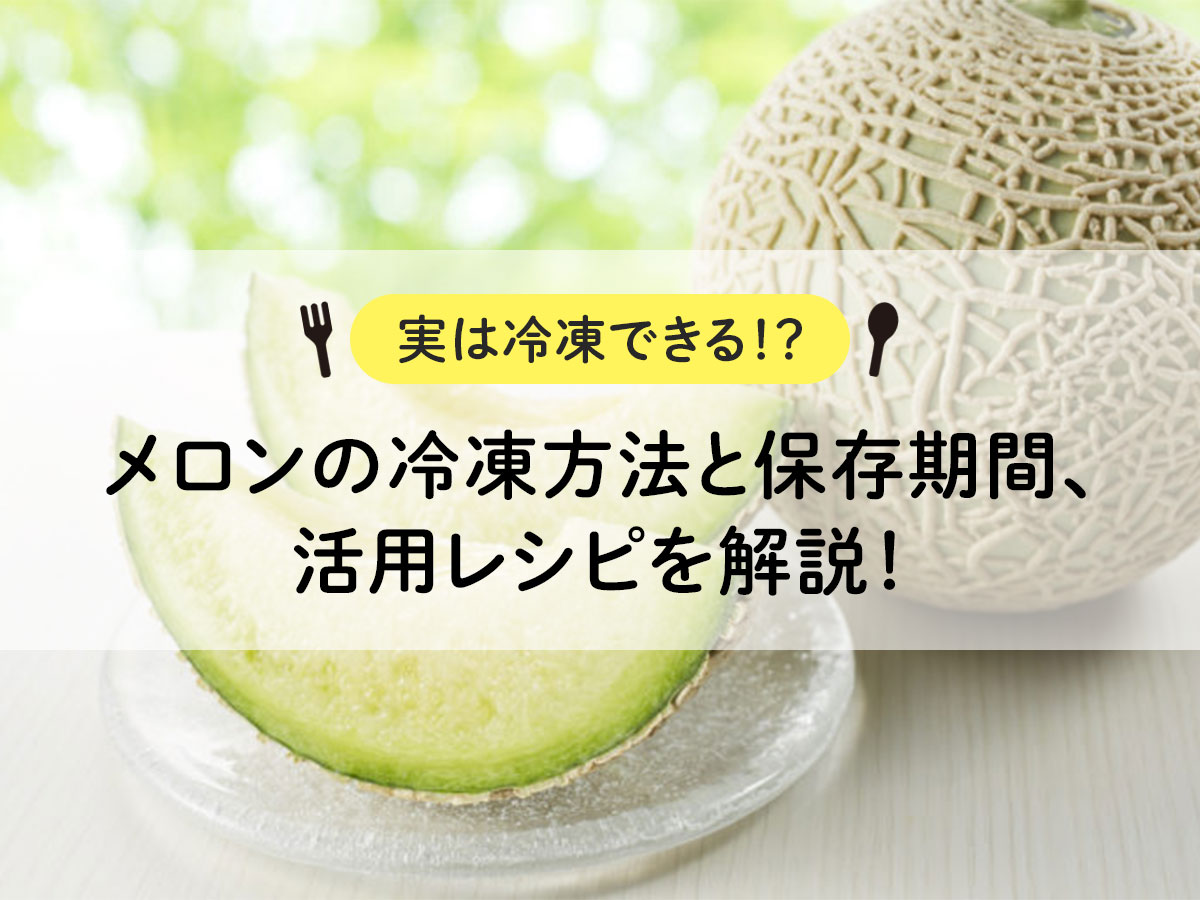

![[Should be frozen! ? ] How to freeze and thaw bread, 5 carefully selected recipes!](https://shunkashutou.com/wp-content/uploads/2023/10/4691acc32cab80284fa0cddf72d58e95.jpg)
![[Need to know] 7 points to thaw frozen crab deliciously](https://shunkashutou.com/wp-content/uploads/2023/08/394440560c05fb5b512d75b81a3fae4f.jpg)
![[Explanation of how to fry! ] How to freeze and thaw pork cutlet, remake recipe!](https://shunkashutou.com/wp-content/uploads/2023/10/0a4143ad8ea0cc6bb6fdab8c74fab407.jpg)
![[Freezing dried persimmons] rapid freezing demonstration](https://shunkashutou.com/wp-content/uploads/2017/01/cc45cd14917f372d2e7aa6a5eeda4583.webp)
![[Explanation with photos] Freezing and storage period of yellowtail fillets, carefully selected recipes!](https://shunkashutou.com/wp-content/uploads/2023/08/2613b1c938d382e3afc17125432167f0-1.jpg)
![How to freeze apples and what is their nutritional value? Perfect for baby food! [Explanation with photos! ]](https://shunkashutou.com/wp-content/uploads/2023/10/cf0380a4b371d2f43e0f0ed99c7344a2.jpg)
![[Long-lasting freshness! ] Explaining the advantages and disadvantages of chilled storage and chilled transportation](https://shunkashutou.com/wp-content/uploads/2016/11/64b437bd976e4ef73a85dbb64cdf9fc8.jpg)
![Thorough explanation of how to freeze eggplant and its storage period! [Explanation with photos! ]](https://shunkashutou.com/wp-content/uploads/2023/08/03fe8d79948a39047616383e2d3fb64a.jpg)
![Introducing how to freeze corn and recipes [Explanation with photos! ]](https://shunkashutou.com/wp-content/uploads/2023/08/195a6cd4120bbae043606a677c71a7dc.jpg)
![[8 times more nutrition! ] Introducing how to freeze clams, storage period, and 5 recipes](https://shunkashutou.com/wp-content/uploads/2023/10/57204e2a2f115f810e29e365cfc86638.jpg)
![[Explaining how to freeze fish! ] Introducing storage period and thawing method!](https://shunkashutou.com/wp-content/uploads/2023/08/a794d4ac4e5f56cd881ba06a0edf9449.jpg)
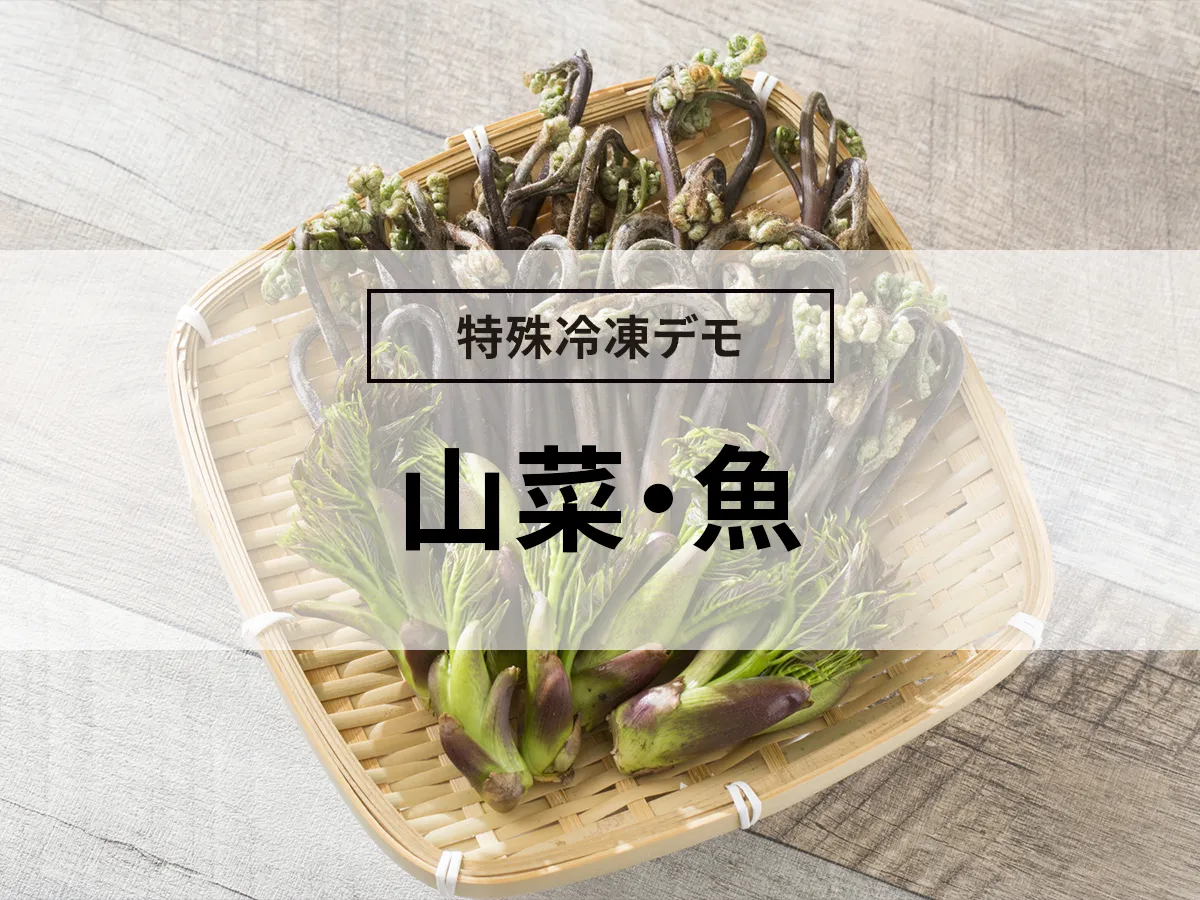

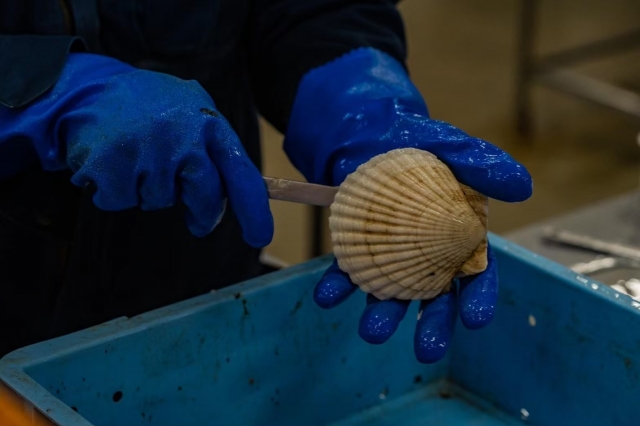
![[For vegetable processors] What is the blanching process that improves the quality of frozen vegetables?](https://shunkashutou.com/wp-content/uploads/2016/09/ad38a1a4c704bc39303ac1864f5b0b8d.jpg)

![Introducing how to freeze/thaw salmon roe and how long to store it [includes carefully selected recipes]](https://shunkashutou.com/wp-content/uploads/2023/09/236b884b68d07d2f5983f2b9ea66583d.jpg)
![[Explanation with photos! ] How to freeze saury, storage period, and 5 recipes!](https://shunkashutou.com/wp-content/uploads/2023/10/fff0f92d808aca2392b3eb576f218f08.jpg)

![Introducing how to freeze and thaw whitebait, as well as recipes for its use [Full of nutrition! ]](https://shunkashutou.com/wp-content/uploads/2023/10/04d15012ec36f91a5574f63dfa9d4771.jpg)
![[How to use leftover sashimi! ] Introducing frozen preservation methods and arrangement recipes](https://shunkashutou.com/wp-content/uploads/2023/10/7451dbe2231dbc559fe002350b8add67.jpg)
![Explaining how to freeze tempura with photos! [Storage period, thawing, carefully selected recipes]](https://shunkashutou.com/wp-content/uploads/2023/10/51f33cde78d02d01a9e827132e4f069d.jpg)

![[Successful example of rapid freezing] Efforts of Yuko Fisheries Cooperative and regional revitalization by women](https://shunkashutou.com/wp-content/uploads/2015/11/68950ce21415f187d34a8a1d5b48956a.jpg)
![[Be good at saving money! ] Introducing the method and recipe for freezing fried rice](https://shunkashutou.com/wp-content/uploads/2023/10/mayo-tyahan-1024x768-1.jpg)
![[Explanation with photos! ] How to freeze taro, storage period, and 5 recipes!](https://shunkashutou.com/wp-content/uploads/2023/10/116858380_-768x512-1.jpg)
![[Can it be frozen? ] Introducing a good way to freeze green peppers and side dish recipes](https://shunkashutou.com/wp-content/uploads/2023/09/30407f106c5c082468c66af0d40c5858.jpg)
![[Can it be frozen? ] Introducing the recipe and how to freeze potato salad!](https://shunkashutou.com/wp-content/uploads/2023/10/3c640cd23d65764c14f701d25970ed59.jpg)
![[Must-see for beginners] What's so great about rapid freezers? Easy-to-understand explanation of the mechanism and benefits!](https://shunkashutou.com/wp-content/uploads/2020/12/9abf7961bd75c2a2af6fb61767b4fdb1-1.webp)
![[Just the meat from the field! ] Introducing how to freeze tofu and meat imitation recipes!](https://shunkashutou.com/wp-content/uploads/2023/10/100675242-768x512-1.jpg)

![[Can it be frozen? ] How to freeze milk, storage period, and 5 recipes!](https://shunkashutou.com/wp-content/uploads/2023/09/d0390cbc7a5e9a76c11d5b9eff3b4a5b.jpg)
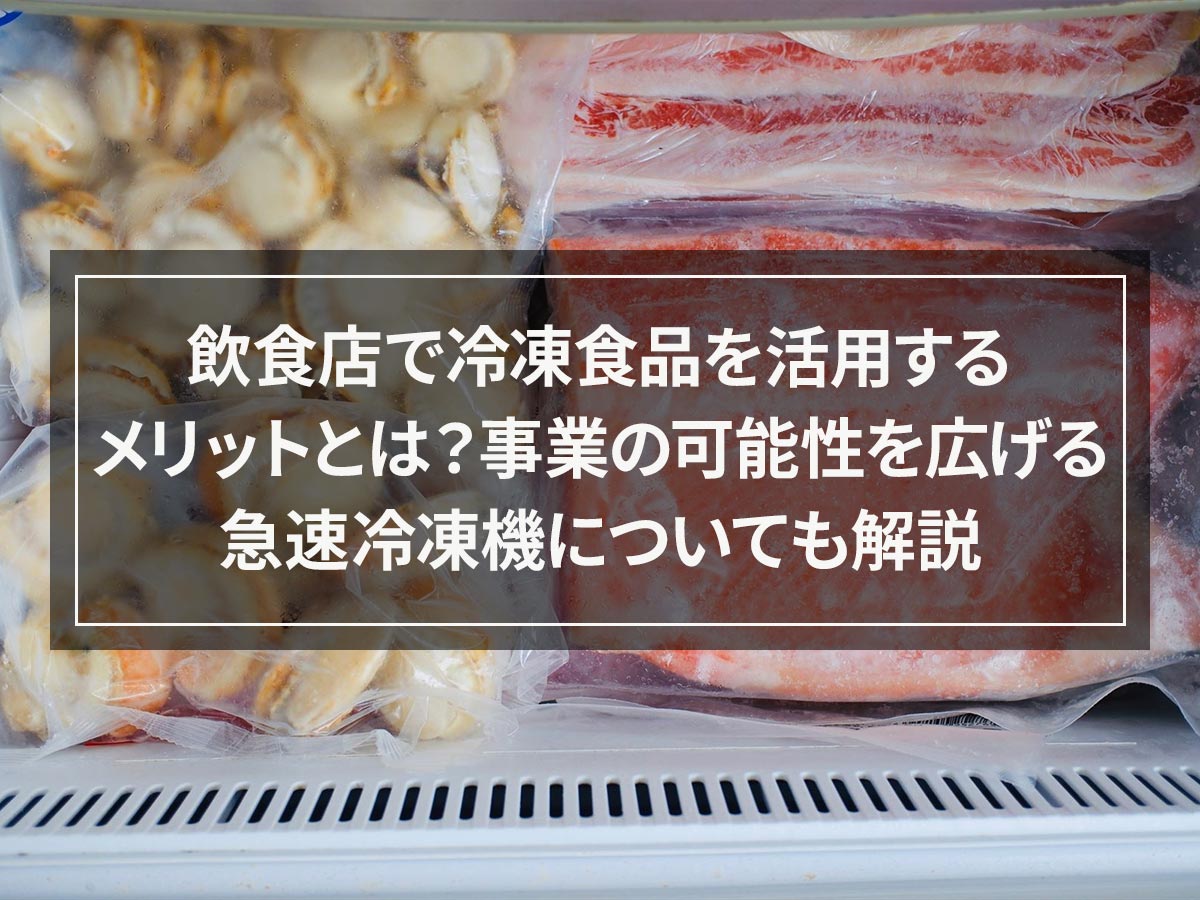
![How to freeze natto, expiration date, baby food and carefully selected recipes [Explanation with photos! ]](https://shunkashutou.com/wp-content/uploads/2023/07/055e5e865986b68d11c3f49f11ea6008.jpg)
![[Explanation with photos] How to freeze peaches, storage period, and 5 recipes!](https://shunkashutou.com/wp-content/uploads/2023/09/b454a38d482a64b14d55d2560aa4193a.jpg)
![Introducing how to freeze burdock and recipes [Explanation with photos! ]](https://shunkashutou.com/wp-content/uploads/2023/09/0812c28da547fe267723143edad2bfed.jpg)

![[Can it be frozen? ] Mentaiko frozen storage, expiration date, and carefully selected recipes!](https://shunkashutou.com/wp-content/uploads/2023/09/618266af112a78579edd3bff41c2a804.jpg)
![[Recommended for lunch boxes too! ] Introducing recipes and methods for freezing pasta!](https://shunkashutou.com/wp-content/uploads/2023/10/93f66b71b92cbe1085d41c4ed80d7726.jpg)
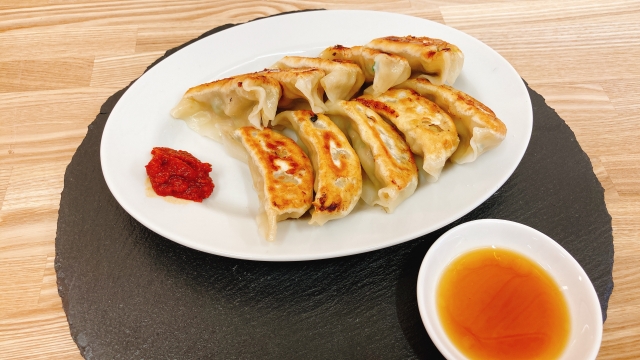
![How to freeze potatoes and a great time-saving recipe! [Moms must see! ]](https://shunkashutou.com/wp-content/uploads/2023/10/potato1-768x512-1.jpg)
![Explanation with photos of how to freeze miso soup and how to make miso balls [Carefully selected recipes]](https://shunkashutou.com/wp-content/uploads/2023/09/83d5bdbdcb7303dde33d5cf227b5ee9c-1.jpg)

![Introducing recipes for freezing and thawing edamame beans [Explanation with photos! ]](https://shunkashutou.com/wp-content/uploads/2023/08/3b6c4c973e0581c14b4460fa13d99a0e.jpg)
![How to freeze sweet potatoes, storage period, and 5 recipes! [Explanation with photos! ]](https://shunkashutou.com/wp-content/uploads/2023/10/36256af24531b73a036523ba73bdf9ec.jpg)
![[Explanation with photos! ] How to freeze pumpkin, storage period, and 5 recipes](https://shunkashutou.com/wp-content/uploads/2023/10/36d3edf3acec7cf27351bd1211e770ac.jpg)
![[Explanation with photos! ] A good way to freeze lotus roots and recipes to use them!](https://shunkashutou.com/wp-content/uploads/2023/10/adac4ea3f269121c4cb5e74b323508f5.jpg)
![[Explanation with photos! ] How to freeze mackerel fillets and 5 carefully selected recipes!](https://shunkashutou.com/wp-content/uploads/2023/10/bf45f102162a8d43387d3a8d3e538034.jpg)
![[Save onions in the freezer! ] Introducing storage methods and recipes with photos](https://shunkashutou.com/wp-content/uploads/2023/10/9d2c1259f1c42d7a0e3b61af361e5da8.jpg)
![[Explanation with photos! ] How to freeze butter, storage period, and 5 recipes](https://shunkashutou.com/wp-content/uploads/2023/08/4e4d4fde2efeae3d997d4356f1cc75c1.jpg)
![[Can it be frozen? ] 5 recipes for yogurt freezing and shelf life!](https://shunkashutou.com/wp-content/uploads/2023/10/yogurt-catch-768x512-1.jpg)
![[Explanation of how to bake! ] How to freeze gyoza, storage period, and arranged recipes](https://shunkashutou.com/wp-content/uploads/2023/09/c3dca78e4f555cfbcfe88d6e13b19bba.jpg)
![[How long does frozen fish and meat last? ] Interesting expiration dates and tips to extend the shelf life](https://shunkashutou.com/wp-content/uploads/2023/08/f124221382987fe32d0ffda6b6f497c1.jpg)
![Explaining how to freeze Maitake mushrooms, their nutritional value, and recipes! [Explanation with photos! ]](https://shunkashutou.com/wp-content/uploads/2023/09/9face03809f7fcaf2e3599773b2e8c80.jpg)
![[Explanation with photos! ] How to freeze beef, storage period, and 5 recipes!](https://shunkashutou.com/wp-content/uploads/2023/07/8717f2a867f52157bab47841b0f29019.jpg)
![[Is it more nutritious than raw? ] Introducing recipes and how to preserve frozen blueberries](https://shunkashutou.com/wp-content/uploads/2023/07/bdc074d8bfa2dc63c2c7bf92dc1dd07d.jpg)
![[Can it be frozen? ] How to freeze cabbage rolls, storage period, and recipe](https://shunkashutou.com/wp-content/uploads/2023/10/f5c1db9a17ef7843ffd45f5ccb160ed5.jpg)
![How to freeze rice balls, storage period, and arranged recipes [use leftover rice]](https://shunkashutou.com/wp-content/uploads/2023/10/2431752695ba1372808f3603c896a5d3.jpg)
![[Make frozen oysters even more delicious! ] Correct thawing method and usage recipes](https://shunkashutou.com/wp-content/uploads/2023/10/5855c6e6d6dbdb298f86405b4b522329.jpg)
![Introducing how to freeze lettuce and recipes [Explanation with photos! ]](https://shunkashutou.com/wp-content/uploads/2023/09/e550b4a0d886ba3aa277d5d8fc87ba73.jpg)
![Introducing the frozen preservation method and recipe for bamboo shoots [Explanation with photos! ]](https://shunkashutou.com/wp-content/uploads/2023/07/4c47b443710cb5788386ab6fd1fa0a07.jpg)
![Explaining how to freeze garland chrysanthemums with photos! [Defrosting and storage period, 5 recipes]](https://shunkashutou.com/wp-content/uploads/2023/10/syungiku-catch-768x512-1.jpg)
![How to freeze chicken, storage period, and 5 recipes! [Explanation with photos! ]](https://shunkashutou.com/wp-content/uploads/2023/08/01f6582931e13522ee0d1ee900be2d1d.jpg)
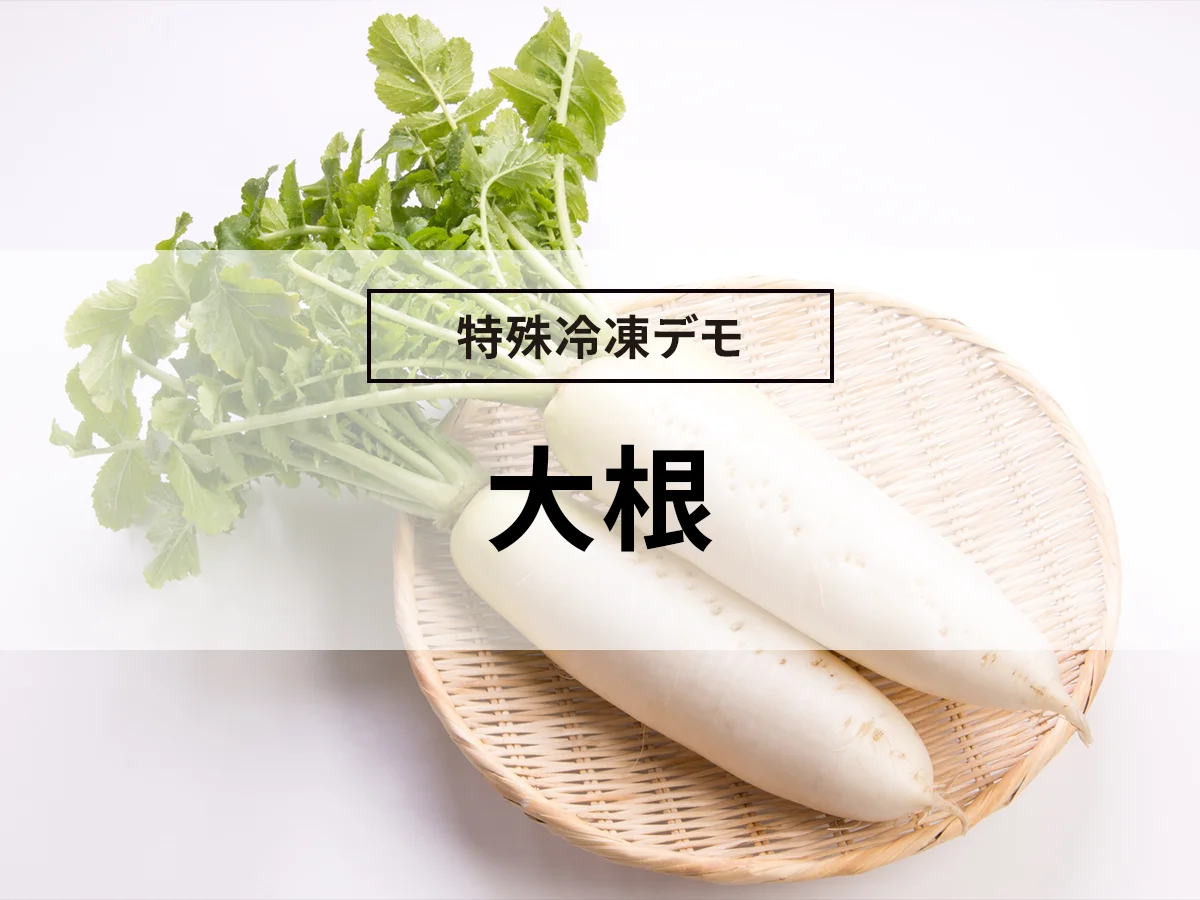
![[With photos] Lemon freezing and storage period, recipes for how to use frozen lemons](https://shunkashutou.com/wp-content/uploads/2023/09/21a01b705aff194717e200bf6dc6ce5b.jpg)
![[Recover the machine cost in about 1 year! ]Reduce loss of tiger puffer fish with rapid freezing!](https://shunkashutou.com/wp-content/uploads/2018/07/1772bacb83f79fbd476ca3d66c8f8281_s1.jpg)
![How to freeze and thaw chestnuts, storage period, and 5 recipes! [Explanation with photos]](https://shunkashutou.com/wp-content/uploads/2023/09/c590a9e6fb16ed45fe2fdd32813de03b.jpg)

![[Includes recommendations by industry] Summary of types and benefits of small rapid freezer](https://shunkashutou.com/wp-content/uploads/2020/12/smallsize.jpg)


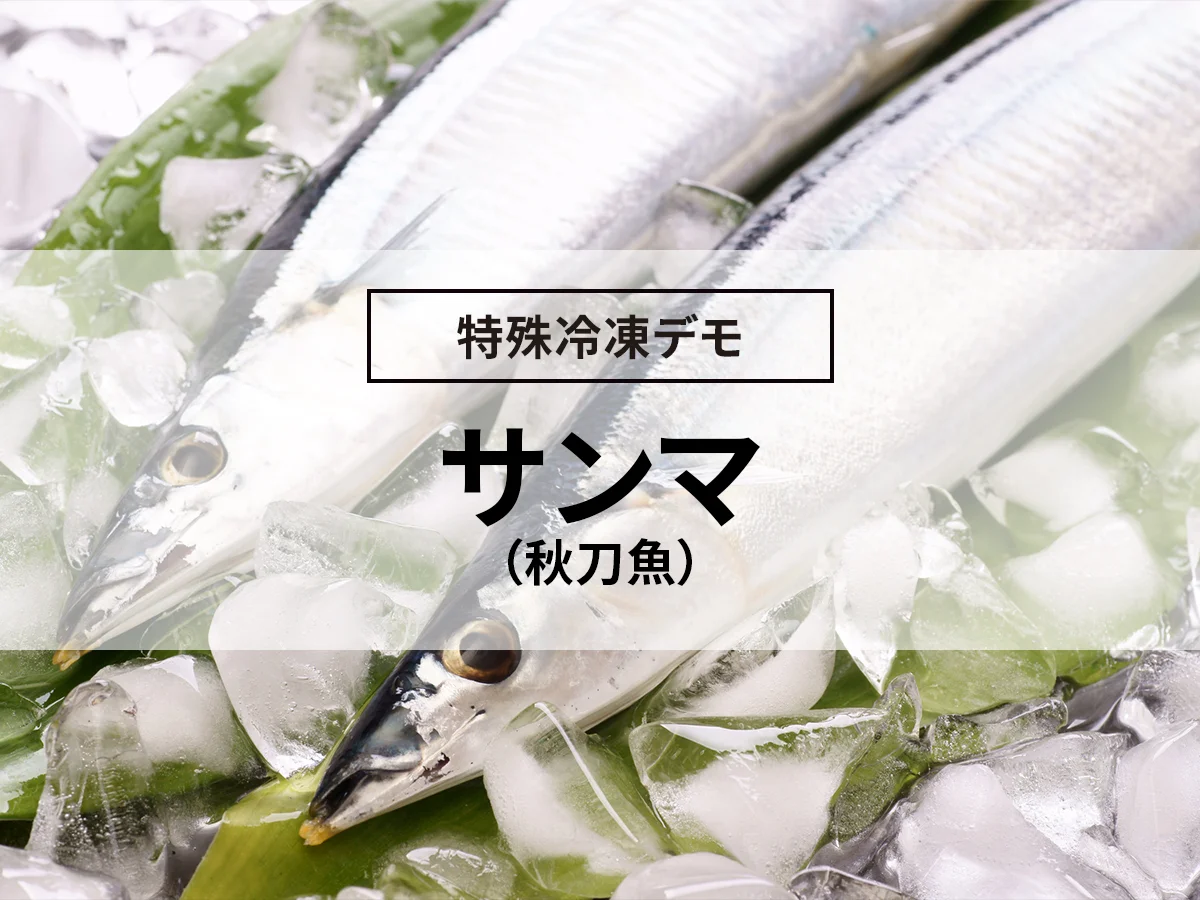
![[Import/Export Industry] Advantages and success stories of introducing rapid freezer](https://shunkashutou.com/wp-content/uploads/2015/05/jirei_yunyu_img_01.jpg)
![How to freeze tomatoes, storage period, and 5 recipes! [Explanation with photos! ]](https://shunkashutou.com/wp-content/uploads/2023/10/tomato-768x513-1.jpg)
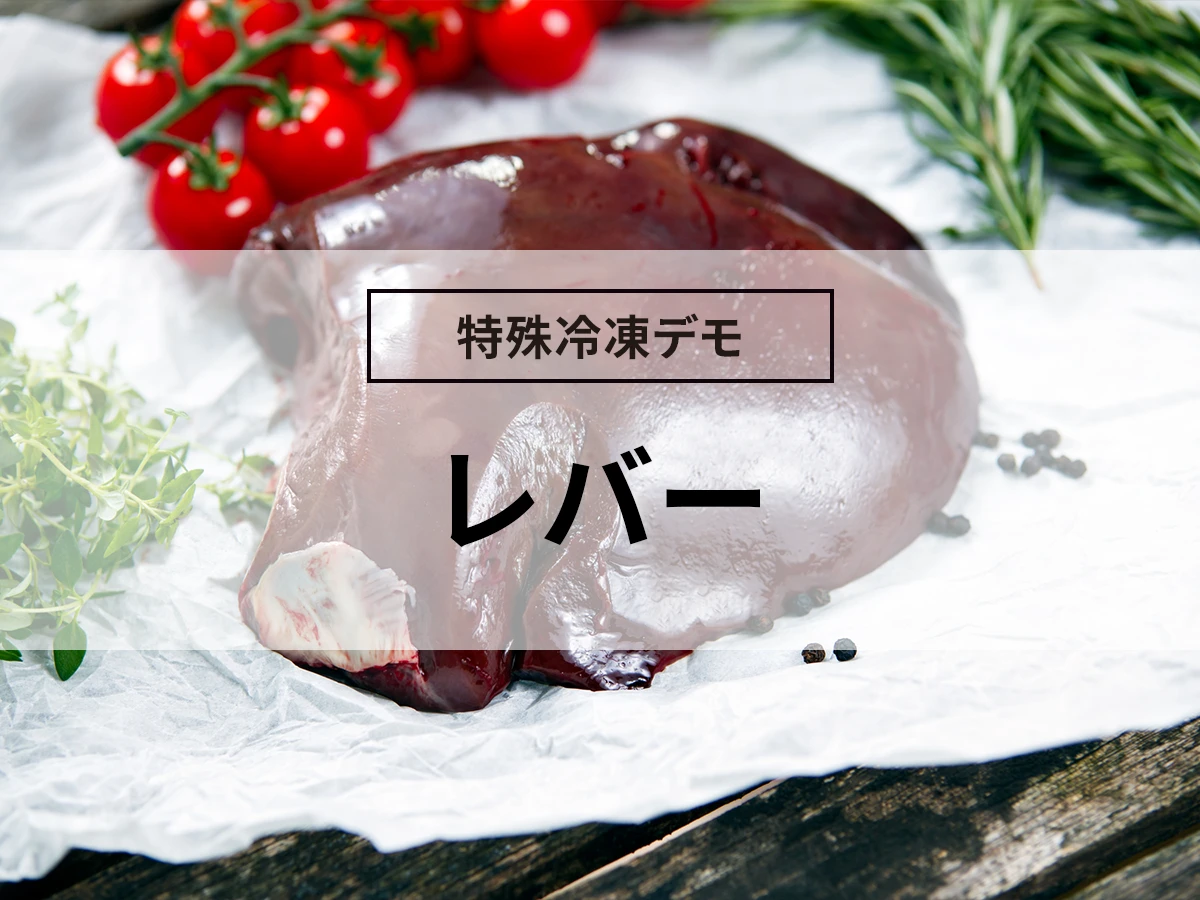
![[Explanation with photos! ] How to freeze and fry croquettes, 5 carefully selected recipes](https://shunkashutou.com/wp-content/uploads/2023/09/b364ee97a71777f9dd2e35fddbbdda72.jpg)

![[Labor shortage]The benefits with examples of using rapid freezer](https://shunkashutou.com/wp-content/uploads/2019/04/hitodebusoku-article-main_pc.jpg)
![How to freeze zucchini and 5 recipes! [Explanation with photos! ]](https://shunkashutou.com/wp-content/uploads/2023/10/zucchini6-768x512-1.jpg)
![[Delicious, Convenient, Cheap] Recommended commercial frozen foods for restaurants to purchase](https://shunkashutou.com/wp-content/uploads/2023/07/business-frozen-food-1024x682-1.jpg)
![[Explanation with photos! ] Shiitake mushroom freezing method and storage period, 5 recipes](https://shunkashutou.com/wp-content/uploads/2023/09/shiitake-768x512-1.jpg)
![[Fruit becomes dessert! ] How to freeze kiwi and sweets recipes](https://shunkashutou.com/wp-content/uploads/2023/09/ecc0fc2bc14391ea13ce2e7a43d1416e.jpg)
![[Guide to handling frozen chicken for commercial use] How to thaw and how long it can be used after that](https://shunkashutou.com/wp-content/uploads/2018/04/IMG_15001.jpg)

![[How long does it last? ] How to freeze cooked rice and how long it can be stored](https://shunkashutou.com/wp-content/uploads/2023/10/7e31499b015d58f220536e3274a41bf2.jpg)

![How to freeze cucumbers and 5 recipes! [Explanation with photos! ]](https://shunkashutou.com/wp-content/uploads/2023/09/37a83e91a989dfbc285ac11dede7c8c2.jpg)
![[Introducing trick techniques! ] How to freeze and thaw pancakes](https://shunkashutou.com/wp-content/uploads/2023/09/4f2e9d04709f0c4e5c1769985a49ac8b.jpg)
![[Includes grilling instructions] How to freeze hamburger steak, storage period, and carefully selected recipes!](https://shunkashutou.com/wp-content/uploads/2023/09/eb3a531f7fd023f973240f698c092b64.jpg)
![How to freeze delicious strawberries and 5 recipes! [Explanation with photos! ]](https://shunkashutou.com/wp-content/uploads/2023/09/1509eaf30e7a2fc1b5bbc88ae15a4034-1.jpg)
![[Explanation with photos! ] How to freeze hijiki and its storage period, 5 recipes!](https://shunkashutou.com/wp-content/uploads/2023/09/ff6bdc527dd066b7d725a48161d7925d.jpg)



